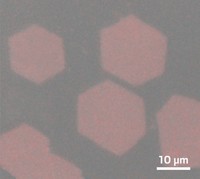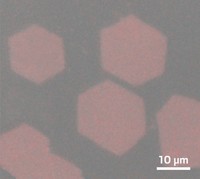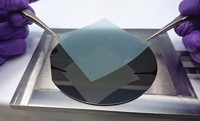Advertisement
Grab your lab coat. Let's get started
Welcome!
Welcome!
Create an account below to get 6 C&EN articles per month, receive newsletters and more - all free.
It seems this is your first time logging in online. Please enter the following information to continue.
As an ACS member you automatically get access to this site. All we need is few more details to create your reading experience.
Not you? Sign in with a different account.
Not you? Sign in with a different account.
ERROR 1
ERROR 1
ERROR 2
ERROR 2
ERROR 2
ERROR 2
ERROR 2
Password and Confirm password must match.
If you have an ACS member number, please enter it here so we can link this account to your membership. (optional)
ERROR 2
ACS values your privacy. By submitting your information, you are gaining access to C&EN and subscribing to our weekly newsletter. We use the information you provide to make your reading experience better, and we will never sell your data to third party members.
Materials
Graphene Sheets ... And Transistors
Two reports show that the promising carbon supermolecule can be prepared in larger films and doped with electrons to make transistors
by Elizabeth K. Wilson
May 11, 2009
| A version of this story appeared in
Volume 87, Issue 19
Two new reports on graphene show that the electronically promising supermolecule, composed of a single layer of carbon atoms linked like chicken wire, can be prepared in large, uniform films and can be doped with electrons to make transistors. Graphene, which has taken the field of materials research by storm in the past couple of years, is usually synthesized in micrometer-sized bits by peeling off slices of three-dimensional graphite. Rodney S. Ruoff and colleagues of the University of Texas, Austin, now demonstrate the ability to grow centimeter-sized monolayer graphene films on copper substrates from methane via chemical vapor deposition (Science, DOI: 10.1126/science.1171245). The graphene films can be transferred to different substrates. As for graphene's electronic properties, scientists have prepared graphene field-effect transistors with hole doping that confers positive charges. But electron doping of graphene transistors has not been done until now. Stanford University's Hongjie Dai and colleagues worked around the impasse by heating ribbons of graphene in ammonia gas, which caused nitrogen species to bond with the carbon atoms at the edges and reactive defect sites in the plane of the ribbons, injecting negative charges into the graphene (Science 2009, 324, 768). From the material, the group produced a field-effect transistor, which operates at room temperature.





Join the conversation
Contact the reporter
Submit a Letter to the Editor for publication
Engage with us on Twitter